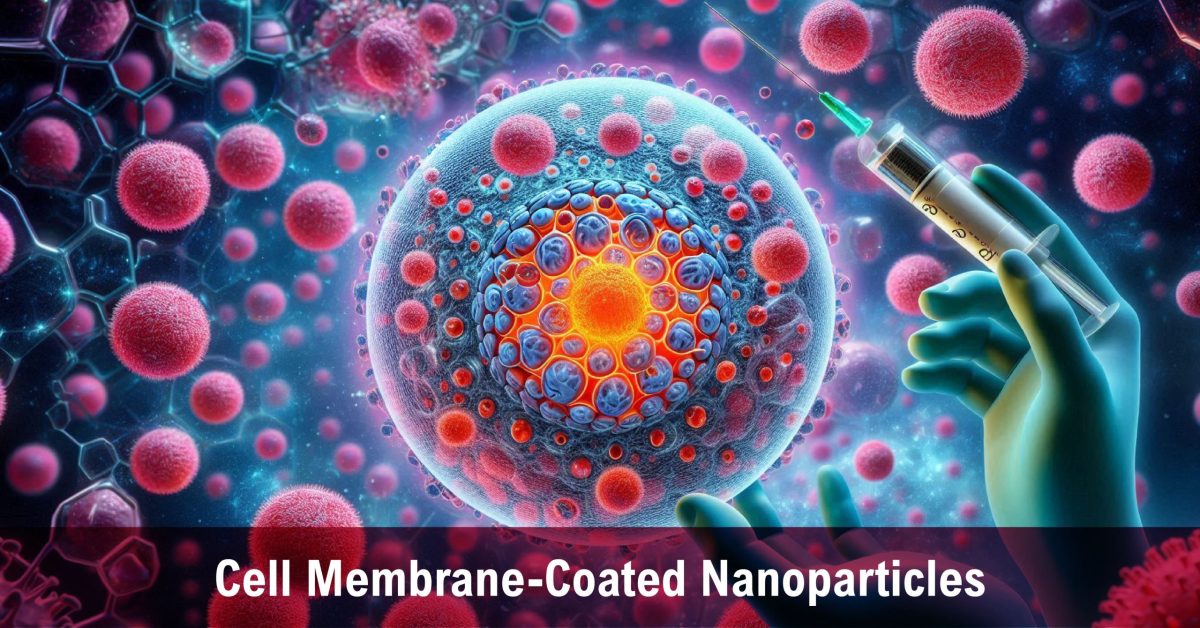Overcoming Biological Barriers
One of the most arduous components of drug delivery is the biological factors armed against drug targets. The barriers include the immune status, which separates and destroys foreign objects, as well as the thick-walled structure of solid tumors. Natural membrane coating on CM-NPs uniquely enables them to overcome such challenges.
For instance, RBC-coated nanoparticles have been reported to escape the immune response, stay in the system for long, and target the area of disease. Nanoparticles that are encapsulated with platelet membranes can target sites of vascular tissue injury and inflammation, which is why they are suitable for therapy in malignancies and cardiovascular diseases. Furthermore, since the CM-NPs mimic the natural behavior of cells, these nanoparticles can get across the blood-brain barrier. This presents an effective means of treating diseases and disorders of the nervous system, which would have otherwise been impossible due to limited drug penetration.
Enhancing Drug Efficacy and Reducing Side Effects
The addition of CM-NPs is well known to improve the therapeutic action of the drugs because of enhanced bioavailability and targeting accuracy. It helps reduce the dosage needed, avoids side effects, and reduces the toxicity to the body by delivering drugs mostly to regions of the disease. The cell membrane covers have the fact of prolonging the time of blood circulation of drugs, which increases the chances of such drugs reaching their target site in the body.
For instance, CM-NPs bearing the membranes of immune cells can be employed to treat inflamed sites with anti-inflammatory drugs, avoiding adverse side effects when addressing non-inflamed areas. Likewise, nanoparticles coated with the membrane of a cancer cell can be used to intracellularly deliver chemotherapeutic agents while reducing the adverse effects that would be caused on non-target cells and tissues during chemotherapy.
Future Directions and Challenges
CM-NPs represent a new paradigm of targeted drug delivery systems; however, there are some persistent challenges in their development and clinical applications. For instance, there is a challenge with the scale-up of the membrane coating process that has to be standardized to achieve uniformity and reproducibility of results. Another important aspect that must be addressed is the containment of the membrane-coated nanoparticles during storage and transit.
In addition, not so much is yet understood about CM-NPs and the immune system. These nanoparticles may escape immune system recognition to some extent, but longitudinal biosafety and immunogenicity studies remain to be performed. Now, research is also being conducted to implement other cell types, like stem cells and immune cells, to design even more sophisticated, efficient nanoparticles.
Continuing with this evolution, through two fields of genetic engineering and synthetic biology, it may become possible to engineer cell membranes that can be made for a certain treatment. This may open doors to new generations of CM-NPs that would combine target specificity and payload functionality plus multi-functionality for the management of wide medical problems.
Conclusion
Assisted drug delivery using cell membrane-encapsulated nanoparticles is a new paradigm in drug delivery that synergizes the attributes of natural biology and nanotechnology to achieve the most potent therapeutic systems possible. These nanoparticles can effectively target cells after avoiding several biological barriers, including immune clearance, due to their properties mimicking those of natural cells. With continued improvements in research, CM-NPs will be the game changers in the management of cancer, infectious diseases, and cardiovascular disorders, among other illnesses, towards a new level of truly individual targeted therapy.
References
- Miao, Y., Yang, Y., Guo, L., Chen, M., Zhou, X., Zhao, Y., Nie, D., Gan, Y. and Zhang, X., 2022. Cell membrane-camouflaged nanocarriers with biomimetic deformability of erythrocytes for ultralong circulation and enhanced cancer therapy. ACS nano, 16(4), pp.6527-6540.
- Park, J.H., Mohapatra, A., Zhou, J., Holay, M., Krishnan, N., Gao, W., Fang, R.H. and Zhang, L., 2022. Virus‐mimicking cell membrane‐coated nanoparticles for cytosolic delivery of mRNA. Angewandte Chemie International Edition, 61(2), p.e202113671.
- Ai, X., Wang, D., Honko, A., Duan, Y., Gavrish, I., Fang, R.H., Griffiths, A., Gao, W. and Zhang, L., 2021. Surface glycan modification of cellular nanosponges to promote SARS-CoV-2 inhibition. Journal of the American Chemical Society, 143(42), pp.17615-17621.
- Zhou, J., Karshalev, E., Mundaca‐Uribe, R., Esteban‐Fernández de Ávila, B., Krishnan, N., Xiao, C., Ventura, C.J., Gong, H., Zhang, Q., Gao, W. and Fang, R.H., 2021. Physical disruption of solid tumors by immunostimulatory microrobots enhances antitumor immunity. Advanced Materials, 33(49), p.2103505.
- Park, J.H., Jiang, Y., Zhou, J., Gong, H., Mohapatra, A., Heo, J., Gao, W., Fang, R.H. and Zhang, L., 2021. Genetically engineered cell membrane–coated nanoparticles for targeted delivery of dexamethasone to inflamed lungs. Science advances, 7(25), p.eabf7820.
- Xiao, P., Wang, J., Zhao, Z., Liu, X., Sun, X., Wang, D. and Li, Y., 2021. Engineering nanoscale artificial antigen-presenting cells by metabolic dendritic cell labeling to potentiate cancer immunotherapy. Nano Letters, 21(5), pp.2094-2103.
- Zhang, Y., Liao, Y., Tang, Q., Lin, J. and Huang, P., 2021. Biomimetic nanoemulsion for synergistic photodynamic‐immunotherapy against hypoxic breast tumor. Angewandte Chemie, 133(19), pp.10742-10748.
